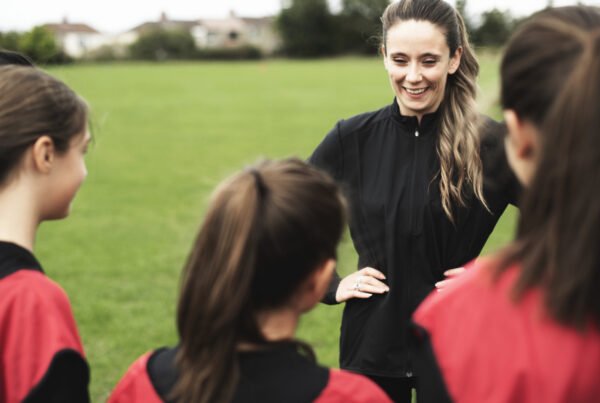Abstract
This report is commissioned by the Tucker Centre for Research on Girls & Women in Sport. It is part of a larger project connecting research-based knowledge to strategies and practices which ensure that every girl has ample opportunity to fully engage in sport and physical activity. The report examines what the research tells us about the ‘critical factors’ (societal, environmental, interpersonal, intrapersonal) that influence adolescent girls’ physical activity. It also examines the outcomes (psychological, physiological, social) that participation in sports and physical activity have on adolescent girls. The key takeaway is that girls are not a monolithic group, and understanding intersectional identities is important for designing and tailoring effective physical activity programs for adolescent girls.
Methodology
The report provides an Evidence-based Multi-disciplinary Model for Developing Physically Active Girls, developed based on the research evidence. The model summarises the role of five social groups that positively influence girls’ physical activity participation. These groups are parents, peers, physical activity leaders, program leaders, and community leaders, who can all function in different ways to contribute to a supportive and inclusive environment for girls. At the centre of the model are the individual girls themselves, emphasising their agency and autonomy, and the importance of individual commitment to physical activity. The model also lists the accrued assets of physical activity, including the physiological, psychological, social, and motor benefits.
Key Findings
Girls physical activity levels decline as they enter teenage years far more dramatically than boys. Positive thoughts, feelings, and experiences with sport can be fostered by creating an inclusive and motivational climate, particularly by promoting belief in the value of all girls. Gendered stereotypes persist, particularly through the media portrayal of female athletes who are more likely to be sexualised or trivialised. Programs need to be more gender-sensitive to consider systemic sexism, as well as by teaching youth sport leaders and the girls themselves critical media literacy skills in order to create strong identities and resist negative portrayals. Single sex P.E. can provide freedom from male dominance, comparisons to male peers and alleviate anxieties around body image and self-efficacy. It is important to understand intersectional differences amongst girls, supporting and meeting the needs of immigrant girls, girls with disabilities, and diverse sexualities and genders. Sports based youth development programs have greater potential to meet needs of all girls if they include aspects of critical thinking, community engagement, and collective empowerment.
Interpretation
Whilst this report focuses on adolescent girls in the United States, the Evidence-based Multi-disciplinary Model for Developing Physically Active Girls can also be applied to Scotland. A similar trend is occurring in Scotland, with physical activity levels amongst young girls dramatically declining as they enter the teenage years comparatively to boys. The same gender stereotypes and negative media portrayals of female athletes apply, making the reports’ emphasis on critical thinking, community engagement and collective empowerment equally applicable. The model’s emphasis on intersectionality, inclusivity and diversity makes it transferable to the context in Scotland. Policymakers need to understand how these different intersectional identities shape the relationship young adolescent girls have with sport and physical activity. To support and encourage physical activity amongst all girls, programs and interventions must be strategic and tailored to meet these specific needs.




